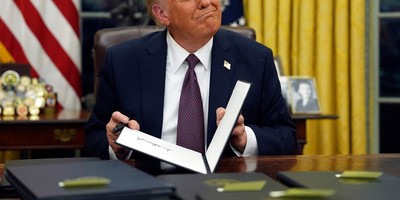Following the alarming recent news that China successfully tested a nuclear-capable hypersonic missile in August, White House Press Secretary Jen Psaki made some notable remarks in the daily press briefing on Monday, October 18th, “we have made clear our concern about the military capabilities that the PRC continues to pursue, and we've been consistent in our approach with China"…"We welcome stiff competition, but we do not want that competition to veer into conflict, and that is certainly what we convey privately as well."
Living a good portion of my early life during the Cold War as the child of an American diplomat, I’m not sure we ever, as a nation, “welcomed stiff competition” from the USSR, or any of its clients, allies, or proxies. We in fact worked tirelessly for a half-century – economically, militarily, culturally, geopolitically – to blunt and erode any perception of competitive edge the Soviet Union possessed. Given that we are essentially in a new Cold-War-style global competition with China I certainly hope we wouldn’t want to encourage or welcome competition with them either.
Beyond the needless additions from the press secretary – to give the benefit of doubt, that comment could have simply been a clumsy afterthought – the reality is that stiff competition from China is already here – front and center – flashing in bright red lights right before our eyes. Moreover, this competition has been building for some time – decades, in fact – and it is manifesting itself on multiple fronts.
Of course, China’s meteoric economic growth over the last 20 years is well-known. In 2014, China’s economy surpassed the U.S. in overall real GDP already becoming the world’s largest exporter in 2010. And their utter dominance in numerous areas of industrial output, raw material production and manufacturing is astounding. For example, China leads the world in rare earth minerals processing (80%), steel production (57% of the world’s production), and coal production (76% in 2020). They are the world’s largest aluminum supplier (roughly producing 31,400 metric tons of aluminum a year). They are the top country for vehicle production – manufacturing over 25 million vehicles in 2019 and they produce 40% of the world’s active pharmaceutical ingredients. They produce roughly 36% of the world’s electronics, making them the most important link in the global electronic supply chain. They also lead the world in high-technology exports and have 21% of global real estate market holdings. And on, and on.
Recommended
And, the pace at which they are building out their military and space capabilities is most alarming – and this recent missile test (which the Chinese have notably described as a spacecraft) is only the latest in a long string of Chinese defense milestones. That said, analysts and experts often qualify concerns about China’s military capabilities by suggesting that they aren’t as technically sophisticated or as lethal even if they’re building more of them at a faster clip…or that China can’t match our power projection capacity…or they don’t possess the global logistics capabilities with which to sustain extended military operations…and other points.
But while much of that may be true, it glazes over a vital point: China has been able to advance as far as they have, in relatively short order, with virtually zero meaningful checks from the global community. China built several islands in the South China Sea over the course of several years without pushback and they routinely conduct provocative military incursions into sovereign Taiwanese airspace with impunity. On numbers alone, China has the world’s largest navy and they are second only to the U.S. in terms of having the most satellites on orbit.
While pioneering nations earned their achievements through trial-and-error, China has taken full advantage of numerous head starts, allowing them to short-circuit progress in technology and military advancement – something they’ll undoubtedly continue to do. And, they’ve made real gains via espionage and consistent theft of intellectual property – a problem that is as much the result of our blindness and naïveté as it is their government-funded and directed efforts. Finally, like many totalitarian nations, the Chinese have been largely unencumbered by the hurdles that western nations have to contend with intrinsically – like democracy, preservation of citizen dignity, elections, environmental concerns, labor laws, regulation, or marketplace rules. Talk about competitive advantages.
And so, the question stands: assuming China has no intent to slow down or pull back, at what point do they match the west, pound for pound? Alternatively, if they can exercise enough dominance in key strategic areas, perhaps they don’t need to compete with us in every category of measure…they can just block and tackle where we’re most vulnerable and exposed. Remember, in the spring of 2020, Chinese communist party propagandists suggested Beijing could cut off vital medical supplies to the U.S. that could “plunge America into ‘the mighty sea of coronavirus.’”
China’s relentless march forward, and their increasingly ambitious agenda – in space, on the world’s oceans, and across continents with plans like the Belt and Road initiative – should be a greater cause for concern, attention and policy focus. That China’s continuing achievements and demonstrations – such as this latest hypersonic missile test – don’t raise the alarms they should with the American public is baffling, especially now in the wake of COVID-19.
We shouldn’t have any illusions about China’s motivations or the competitive threat they pose across several domains of interest. But as long as the global community remains unable to muster the resolve to truly confront China in a meaningful, paradigm-shifting way, or until we are able to find a better country to do business with, expect China to keep pushing on the way they have.
Stiff competition, you say? Yeah…stiff competition indeed.

























Join the conversation as a VIP Member